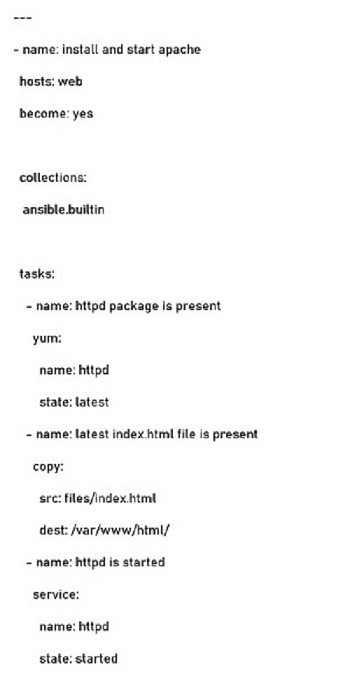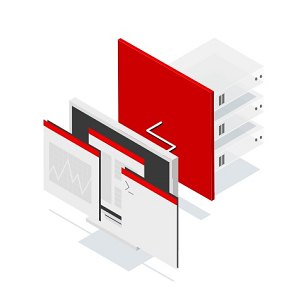Technology certification
Introduction to the Ansible Automation Platform Certification
In our last blog, we introduced Ansible, some of the common customer use cases, and why you may want to learn more as a Red Hat Technology Partner. This post will continue that thread by introducing the Ansible Certification Program which will help Red Hat technology partners understand how to create Ansible content and how Ansible integrations for their platform can help their customers.
Here’s what we'll cover:
- What is Ansible?
- Why enable a partner platform?
- Who uses Ansible?
- Partner integration
- Certifying and publishing an Integration
The Automation Market
Most of the low-level projects in corporations have been running automation for their tasks. System admins, network engineers, cloud engineers and security engineers all have their own set of automation present for their day to day work. Bringing automation together as a company objective has become imperative in the recent years and especially after COVID-19.
Who uses Ansible?
Ansible can be used by a lot of different personas inside an organization. The most commonly targeted personas include:
- IT Ops: Ansible can not only automate linux infrastructure, but also your security devices, firewalls and network devices and cloud infrastructure, even the operations of a lightbulb can be automated if needed and if it meets the requirements. Ansible helps IT Operations teams in managing enterprise wide automation by helping in managing multi-site inventory , RBAC (Role Based Access Control) and security at scale.
- Platform developers: These are the “plumbers” who are making sure their platform is automatable via Ansible and they maintain Ansible content.
- Automation implementers: These are the end-users and the mutual end-customers, playbook writers whose job is to stitch every automation operation together. They implement the Day0, Day1 and Day2 operations inside an organization.
What’s in it for you?
- Faster adoption: Ansible helps in abstracting the in-depth platform knowledge by using the almost human readable YAML format, which will help in faster adoption of your platform. Ansible is easy to learn which helps customers up and running quickly.
- Easier to support: Troubleshooting manual processes and CLI is cumbersome. Instead of reverse engineering a problem, a known-good Ansible playbook can help ensure predictable outcomes. We see this today as part of Red Hat as well, as we now have a lot of teams creating Ansible content for their day 0 and day 1 activities like RH Satellite, Insights and RHEL system roles. We are eating our own dogfood and recognizing the value of Ansible
- Shorter sales cycle: You can get your customer up and running quicker which means quicker proof of concepts, and shorter POs (purchase orders). We have seen the power of network automation help reduce the order completion time from months to weeks. It’s beneficial to do Ansible adoption and use certified content for customers to get joint support from Red Hat and technology partners.
Ansible Playbook
To give a better idea how Ansible works, below is an actual Ansible playbook:

In the example above, the playbook installs and starts apache by running three ansible tasks Tasks are the unit of action in ansible and the three tasks that run as part of the playbook above are checking if the httpd package is present, copying the index.html to the required path and then starting the httpd service. The tasks themselves are using “modules”, the reusable and standalone building blocks of Ansible which do the actual work. For example, in the above shown playbook the copy module ensures that the given source file is copied over to the destination. The playbook writer does not have to know how this is actually done on command line level, the module takes care of it.
Ansible playbooks are created by automation customers and can include the usage of modules, plugins which extend the functionality, or pre-created sets of playbooks (so called “roles”) as part of an Ansible collection, which is the integration layer created by you as a partner.
- They abstract away complexity and limit the domain knowledge required to automate given environments.
- They are simple to understand and mostly human-readable.
- They can be used to create idempotent descriptions of environments and setups.
Where will your Ansible integration live?
Your platform integration with Ansible will happen in the form of an Ansible collection which will be hosted in Ansible Automation Hub and surfaced to users via Ansible Tower WebUI and API. Partner platforms can be of multiple types and we already have published collections for different cloud, network, security platforms and more.
In the image below, the red boxes are exposed to automation customers and that is where your Ansible content would live.
Your content will not be hidden and it would be at the front and center of the Ansible Automation Platform giving users the full control of what they want to do with the content.


Ansible content collections
It is a layer above ansible roles, plugins and modules, as in all the said content can be part of the Ansible Content Collection’s structure. Customers and Partners now have the ability to install, configure and publish collections outside of the Ansible Project and have them delivered as part of Ansible Galaxy and Ansible Automation Hub.
This is beneficial to partners as it provides a platform integration with Ansible. Before there was the need to first write, build and submit code to the actual Ansible Project, making Ansible a very large project moving forward only very slowly, a very big side-effect of including everything. Also you’d have to wait for the project lifecycle to get your content included which was 6-9 months. Collections give you the ability to distribute, share and consume content at your own pace by providing a way to separate content from the actual Ansible execution engine.
This helps Ansible scale better as you all as partners will be the owners of your own content and of the domain. Collections are the answer to how to distribute and create content.
Ansible galaxy and Ansible automation hub
Ansible Galaxy holds all the community content in the form of collections and roles, It usually holds bleeding edge, community written content.
Ansible Automation Hub is the enterprise location for your content and is available to be accessed via an Ansible subscription. The collections hosted by Automation Hub are certified and supported by Red Hat or jointly by Red Hat technology partners (who have platform integrations published there) and Red Hat. This gives partners and Red Hat a joint support story as the content published here is tested, trusted and partners have access to advanced analytics on their content.
Private automation hub
Private automation hub is an on-premise enterprise content repository which was recently released. If you are an enterprise who wants to manage and curate content for their customers behind a firewall or in a disconnected environment, Private Automation Hub is for you.
Private Automation Hub can pull collections from multiple sources and then plumb them into Automation Platform to provide enterprise users with the capability to automate all their infra in a seamless and disconnected manner. Additionally, an enterprise can upload their own custom written content and upload it to Automation Hub.
If you are a large organization and you are worried about how automation implementers are writing content, you want to make sure they are using tested, trusted and certified content inside the organization and not pulling content from untrusted sources or the web. The Ansible private automation hub offers the necessary management capabilities to do just that.
Ansible certified collection ecosystem today
The Ansible automation hub has currently more than 65 collections available to do different platform integrations, all of these are certified and can be synced with private automation hub. As part of talking to the partners and the connect team, the Ansible team is ready to take the certification program to the next level and scale it out.
We want to provide assistance to the existing Red Hat partners and bring them into the Ansible ecosystem as well, if they are already part of other certification programs.
Where to go from here?
Please visit www.ansible.com/partners to learn more about the Ansible automation platform Certification Program
We can help
Have questions about the Ansible Certification Program? Not sure where Ansible can fit into your solution? Want to know more about what was discussed in this post? Please reach out to us ansiblepartners@redhat.com

